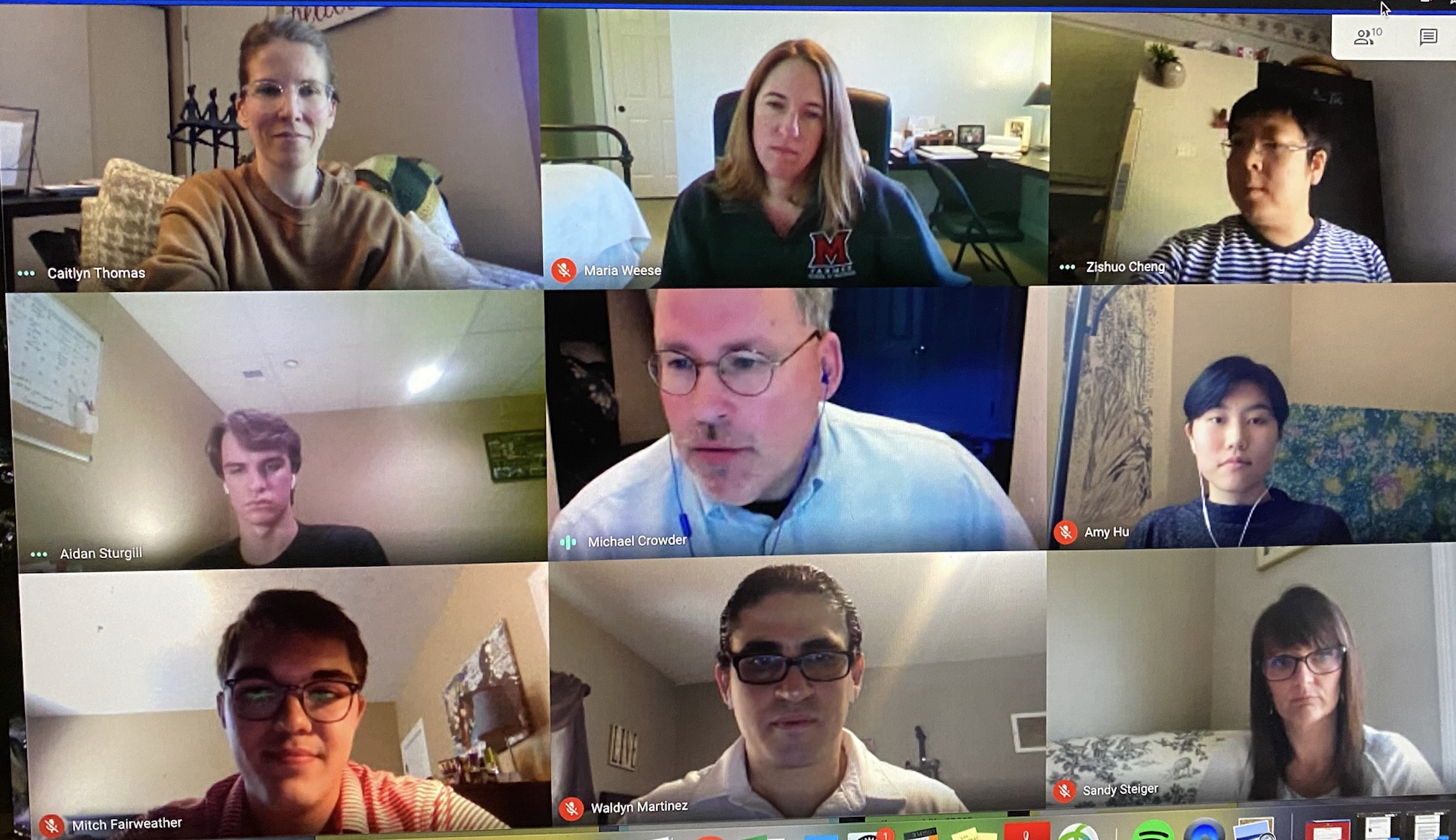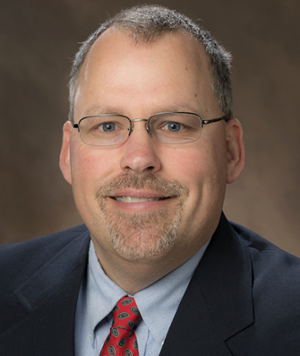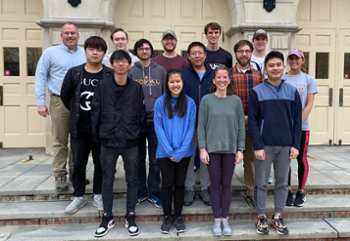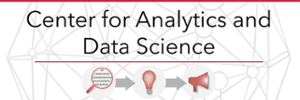

Miami research team helps search for possible treatments for antibiotic-resistant secondary infections common with COVID-19
By Margo Kissell, university news and communications
Three Miami University professors are leading a research team to find potential drug compounds to fight antibiotic-resistant secondary infections common with COVID-19.
One of their key tools? Machine learning, an application of artificial intelligence.
Researchers and graduate and undergraduate students in the department of chemistry and biochemistry have joined forces with Farmer School of Business information systems and analytics faculty and interns in the Center for Analytics and Data Science (CADS).

Michael Crowder
“Big data and data analytics are very important to all people, and I believe maybe even more important to scientists,” said Michael Crowder, professor and chair of the department of chemistry and biochemistry.
Crowder said that in a few weeks he will submit the team’s initial findings to National Institutes of Health (NIH) collaborator James Inglese, who is a principal investigator with the NIH’s National Center for Advancing Translational Sciences (NCATS).
Inglese had learned about the Miami research project over dinner during a Feb. 20 visit to campus to deliver a seminar before COVID-19 spread to Ohio and prompted the governor’s stay-at-home order.
“He immediately got interested in it. He suggested this collaboration with NCATS,” said Crowder, who will become associate provost and dean of the Graduate School on July 1 and also serve as interim vice president for research and innovation.
Graduate student Caitlyn Thomas (Miami ’12, MS ’18), who is pursuing a doctorate in chemistry with Crowder, is glad she’s part of the research team.
“There are secondary infections resulting from the coronavirus, and our model could potentially predict a compound that might help fight that if it were to become resistant to antibiotics,” she said.
Bringing together science and machine learning
The research project started in February after Zishuo “Toby” Cheng, a postdoctoral associate in Crowder’s lab since 2016, attended a CADS workshop on data analytics. He became interested in enzyme inhibitor discovery using machine learning and looked up what has been done with it.
Cheng’s research focuses on studying the evolution of antibiotic resistant bacteria and identifying novel inhibitors to fight against bacterial resistance. He plans to work on drug discovery in the pharmaceutical industry after his postdoc training.

Michael Crowder (far left, back row) stands with his lab group, including Zishuo “Toby” Cheng (center, middle row) and Caitlyn Thomas (third from left, front row.)
Since 1992, Crowder has been researching metallo beta lactamase (MBLs), which render bacteria resistant to antibiotics.
He and his students created the Miami-based website mblinhibitors.com as a database for all of the information they have collected. Both men agree antibiotic resistance is becoming a growing global threat.
Approximately two million people in the United States each year acquire bacterial infections that are resistant to one or more antibiotics and about 23,000 people die due to this resistance, according to Crowder’s database.
“It has been intensified and complicated by the fight against coronavirus COVID-19, which is affecting 210 countries and territories around the world,” Cheng said.
There is concern COVID-19 could lead to a surge in antibiotic-resistant bacteria because of the widespread use of antibiotics.
“Despite considerable efforts, there are no clinically-approved inhibitors that are available for metallo beta lactamase (MBLs) — which cause the resistance — making infections from bacteria that produce MBL a serious challenge,” Cheng said.
Crowder, Cheng and Thomas had several discussions before connecting with CADS leadership on how machine learning could help them search for potential compounds.
For Cheng, this project hits close to home.
He earned his bachelor’s degree from Wuhan University in Hubei Province of China, where COVID-19 originated. Both Hubei province and Louisiana, (where he earned his doctorate at Louisiana State University), have been particularly hard-hit by the pandemic.
“As a scientist, I want to make my contribution to fight against this global threat,” Cheng said.
Searching for a proverbial “needle in a haystack”
Maria Weese, the Richard T. Farmer Assistant Professor of Analytics, said the search for potential compounds to inhibit bacteria from becoming antibiotic resistant normally involves testing the compound in a laboratory.

Maria Weese, the Richard T. Farmer Assistant Professor of Analytics, and Waldyn Martinez, assistant professor of analytics, have been working on the project with CADS interns Amy Hu, Mitch Fairweather and Aidan Sturgill.
“To find a potentially useful compound, a laboratory would have to test millions of possible compounds — making the search much like finding a needle in a haystack,” she said. “This is where a machine learning model can help.”
Although labs at Miami have been shuttered since March because of Ohio’s stay-at-home order, Crowder and Cheng have a small database of compounds in their lab that already have been tested for inhibiting antibiotic resistance.
“The CADS students extracted thousands of measurements about each chemical compound (structure, bond strengths, etc.) and related those structural measurements to whether these compounds are likely to be a good inhibitor or not using a machine learning model,” Weese said.
“The machine learning model is able to rank the compounds from most likely to be a good inhibitor to least likely and can be applied to any compound’s structural characteristics.”
So far, they have identified several compounds as potential leads that will be sent to the NIH collaborator to verify. They hope to get results back from NIH in July. Weese said the students will analyze those results during fall semester and factor them into new models.
Undergraduates hone skills in building machine learning models
Weese and Waldyn Martinez, assistant professor of analytics, have been working with CADS interns Amy Hu, Mitch Fairweather and Aidan Sturgill.
Miami's Center for Analytics and Data Science (CADS) is a university-wide iniative that develops problem solvers to turn data into insights and insights into action. CADS is located in the Farmer School of Business.
Fairweather, a junior finance and analytics double major, said the importance of the project became more real as COVID-19’s spread prompted remote learning at Miami and elsewhere. The project continued, with the students meeting twice a week virtually in addition to the entire team’s online meeting every Friday.
Amy Hu, a junior with a marketing and analytics double major, has enjoyed learning new skills in Python with a hope of contributing to something more meaningful.
Sturgill, a first-year student majoring in biochemistry with a premedical studies co-major, has since added a business analytics minor because of what he has learned in this project.
“I’ve taken stats classes before but it’s never directly related to my major,” Sturgill said, “so this was a cool application of that. I get to kind of connect two fields I thought of as independent of each other before.”
CADS director Sandy Steiger (Miami MS ’04), who took over the role last spring, said this research effort shows what kind of powerful collaborations can occur between departments across campus.
“When I started, one of the things I wanted to do with CADS was getting our roots out there and extending our roots across campus. This project is a perfect example of that.”
Follow @MiamiOHNews on Twitter for news about Miami University, its students, faculty, staff and alumni.
